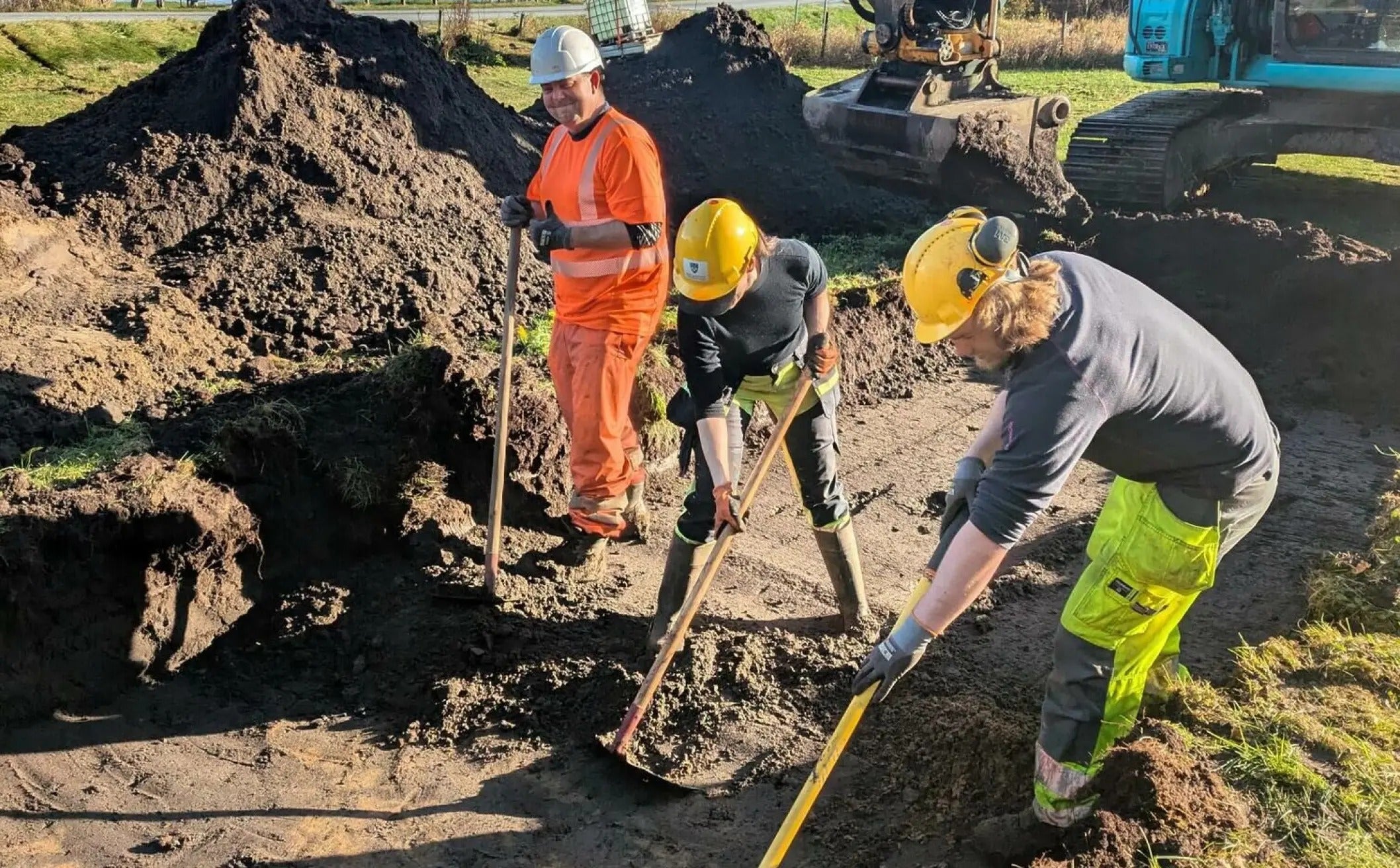
Dendrochronology Confirms Oslo’s King's Wharf Origins in 1288
In a remarkable archaeological expedition that unfolded in March 2023, researchers from the Norwegian Institute for Cultural Heritage Research (NIKU) made a significant discovery that offers a precise glimpse into medieval Oslo's maritime infrastructure. The excavation of eight metres of intact wharf foundation in Bjørvika has provided unprecedented insights into the city's royal maritime history, revealing a structure with direct connections to the medieval Norwegian monarchy.
Dendrochronology: The Science Behind Precise Dating

Fifteen pieces from the King's Wharf underwent dendrochronological analysis, revealing that 13 were from trees felled in 1287-88, with two dated slightly earlier. (Photo: NIKU)
At the heart of this discovery lies the sophisticated scientific technique of dendrochronology - a method that transforms wooden artifacts into precise historical documents. By meticulously analyzing tree rings, archaeologists can determine not just the age of wood, but the exact season and year of tree felling.
Trees create annual growth rings that vary in width based on environmental conditions. A warm summer produces wider rings, while challenging years result in narrower bands. By comparing these ring patterns with established regional reference chronologies, researchers can pinpoint the exact timeframe of wooden structures with remarkable accuracy.
The King's Wharf: A Royal Maritime Landmark

Massive logs formed the foundation of Oslo’s King's Wharf in the late 13th century. Likely designed to accommodate large ships, the structure also served as a symbol of royal authority. (Photo: Sara Langvik Berge / NIKU)
The excavated wharf, now confirmed to have been constructed from trees felled in the winter of 1287 and spring of 1288, represents more than just an architectural remnant. It is a tangible connection to the governance and urban development of medieval Norway.
During this period, Norway was ruled by King Eirik II Magnusson, with his brother Duke Haakon governing Oslo. The wharf's location - extending directly from the royal estate - underscores its strategic and symbolic importance. As archaeologist Håvard Hegdal notes, "It's not just any wharf, but specifically the King's Wharf."
Archaeologist Axel Christophersen offers a nuanced perspective on the wharf's significance: "The ideology behind a royal estate was fundamentally about symbolically representing the King's presence in the city." The unusually large logs used in construction suggest more than mere functional requirements - they were a statement of royal power and prestige.
A Short-Lived Maritime Structure

The King's Wharf once extended directly from the royal estate in medieval Oslo, now the site of Oslo's Medieval Park. Apartment construction is underway where the wharf's foundation is marked. (Image: NIKU)
Intriguingly, the wharf's active service was relatively brief. By the end of the 14th century, it had been repurposed, with archaeologists discovering an anchor dropped in its midst - a clear indication that its original maritime function had ceased.
Inside the wharf, researchers uncovered a fascinating accumulation of medieval urban life: fish waste, organic matter, and preserved fungi that provided additional historical context. This transformation from a royal maritime structure to a municipal dumping ground reflects the dynamic nature of medieval urban spaces.
Preservation Challenges in Urban Archaeology
The story of the King's Wharf also highlights the ongoing challenges in preserving archaeological discoveries. Despite its historical significance, the excavated section was ultimately destroyed, a fate shared by numerous archaeological finds in Norwegian urban environments.
Experts like Christophersen argue that such destructions represent a systemic failure, emphasizing the need for politicians and cultural institutions to prioritize the preservation of historical artifacts.
The precise dating and excavation of the King's Wharf offer more than just a technical archaeological achievement. They provide a window into the complex social, economic, and political landscape of medieval Oslo, revealing how maritime infrastructure was intrinsically linked to royal power and urban development.
Reference
Norwegian Institute for Cultural Heritage Research (NIKU)
Bergstrøm, I. I. (2023). "Precise dating from Medieval Oslo: This is undoubtedly the King's Wharf". Science Norway.
NTNU University Museum








